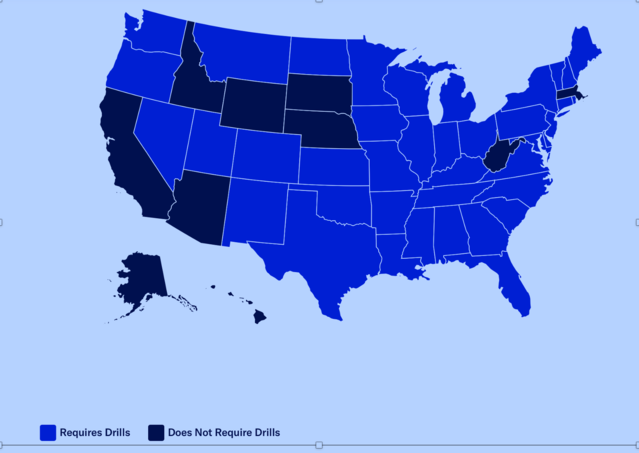Fear
Keeping Our Kids Safe in School, Safe From Our Fears
School shootings scare us into overreactions that harm more kids.
Posted September 23, 2020 Reviewed by Gary Drevitch
From the following list of risks our kids face in school, choose the one most likely to do the most kids the most harm:
Remember: The question is about the harms that kids actually suffer, not the risks that worry us most.
COVID-19 would be a logical choice. It is a lethal pandemic, after all. Many schools that have re-opened with kids in class have already had students and/or faculty fall ill. School shootings might be a logical choice. Scores of innocent kids have been gunned down in our schools in recent years. But new research strongly suggests that the answer is fear…and that it’s a fear that we are scarring into an entire generation of public-school children with the way we are overreacting to Risk #2, shootings.
Few risks trigger greater fear than threats to our kids. As a result, school shootings get enormous media attention, which further magnifies our fears…often far beyond the actual danger. (Fear of risk to children and high “awareness” are just two of many subconscious psychological factors in the inherently subjective, emotional way we perceive and respond to potential harm.) The risk of a K-12 public school student being shot in school on any given day, over the period from the first internet age school shooting in Columbine Colorado in 1999, is roughly 1 in 820,000,000 (57 million kids X 180 days of school/year X 20 years / 250 shootings, according to Northeastern University’s Criminal Justice Program.)
In response to that statistically infinitesimal but emotionally enormous risk, we have instituted all sorts of policies in the earnest desire to keep our kids safe: More police in schools; teachers and administrators carrying weapons to work; and most of all, active shooter drills that teach kids what to do if such an attack occurs. Of course, those drills also teach the kids something else: fear.
New research by Georgia Tech done for the advocacy group Everytown for Gun Safety analyzed word usage in 27.9 million tweets and 1,454 Reddit posts by people in the area of 114 public schools in 33 states that had active shooter drills, comparing words used 90 days before and after those drills. The findings starkly confront us with the harm we’ve done to our kids in the name of keeping them safe.
“A 42 percent increase in anxiety and stress from pre- to post-drills (as evidenced by an increase in such words as afraid, struggling, and nervous) and a 39 percent increase in depression (evidenced by words such as therapy, cope, irritability, suicidal) following drills. This trend was sustained at least 90 days following drills and spanned diverse school districts and drill tactics. Individuals expressed more social and personal concerns (e.g., there was a 33 percent increase in concerns about friends, a 14 percent increase in concerns about social situations, and a 108 percent increase in concerns about work), fewer positive sentiments, and more requests for help following drills as well.”
“Concerns over death increased by 22%, with words like blood, pain, clinics, and pills becoming a consistent feature of social media posts in school communities in the 90 days after a drill.”
While the statistical likelihood of a kid being shot in school is tiny, the odds that any public school kid might be exposed to these worrying drills is high. Everytown for Gun Safety reports that as of 2015, 95% of public schools in the United States were conducting active shooter drills. They are required by law in 41 states, and many districts in states without such a mandate also conduct such drills as a matter of policy. But this research suggests that that policy is apparently doing far more harm than good.

The message is clear: We seem to be putting our kids at risk as a result of trying to keep them safe. But will that message get as much attention as the next shooting, or as much attention as the debate about whether and how to re-open schools in the shadow of COVID-19? Of course not. This risk is insidious, hidden. There are no obvious victims, no headlines or video, no evil gunmen to blame. Yes, it triggers greater concern because it’s a risk to kids, but it doesn’t have any of the other psychological characteristics – like high “awareness," imposed on the victim by others – that make risks feel more frightening.
This is what I call The Risk Perception Gap, in which we worry about some risks more than we need to – the shootings – and worry about some threats less than we should – the emotional impact of shooter drills — and create new risks by those very misjudgments. The children whose safety means everything to us are apparently being harmed by what our risk-perception psychology has led us to do in our sincere desire to protect them.
The experts who have researched the psychology of risk perception say that it is difficult to overcome the instinctive and subconscious way this system works. But one thing can help: when we come to realize that the Risk Perception Gap is causing danger all by itself.
If you are the parent of a school-aged child, or know anyone who is; if you are a teacher or know someone who is; if you are an education system administrator or part of local government that deals with education, or know someone who is, may I respectfully encourage you to share this post. Help give this evidence and all that it teaches us the attention it deserves. Help give this example of the Risk Perception Gap the awareness that will help us combat it. Share these insights and help your community think more carefully about how to make the healthiest possible choices for maximizing the safety and well-being of our kids.


